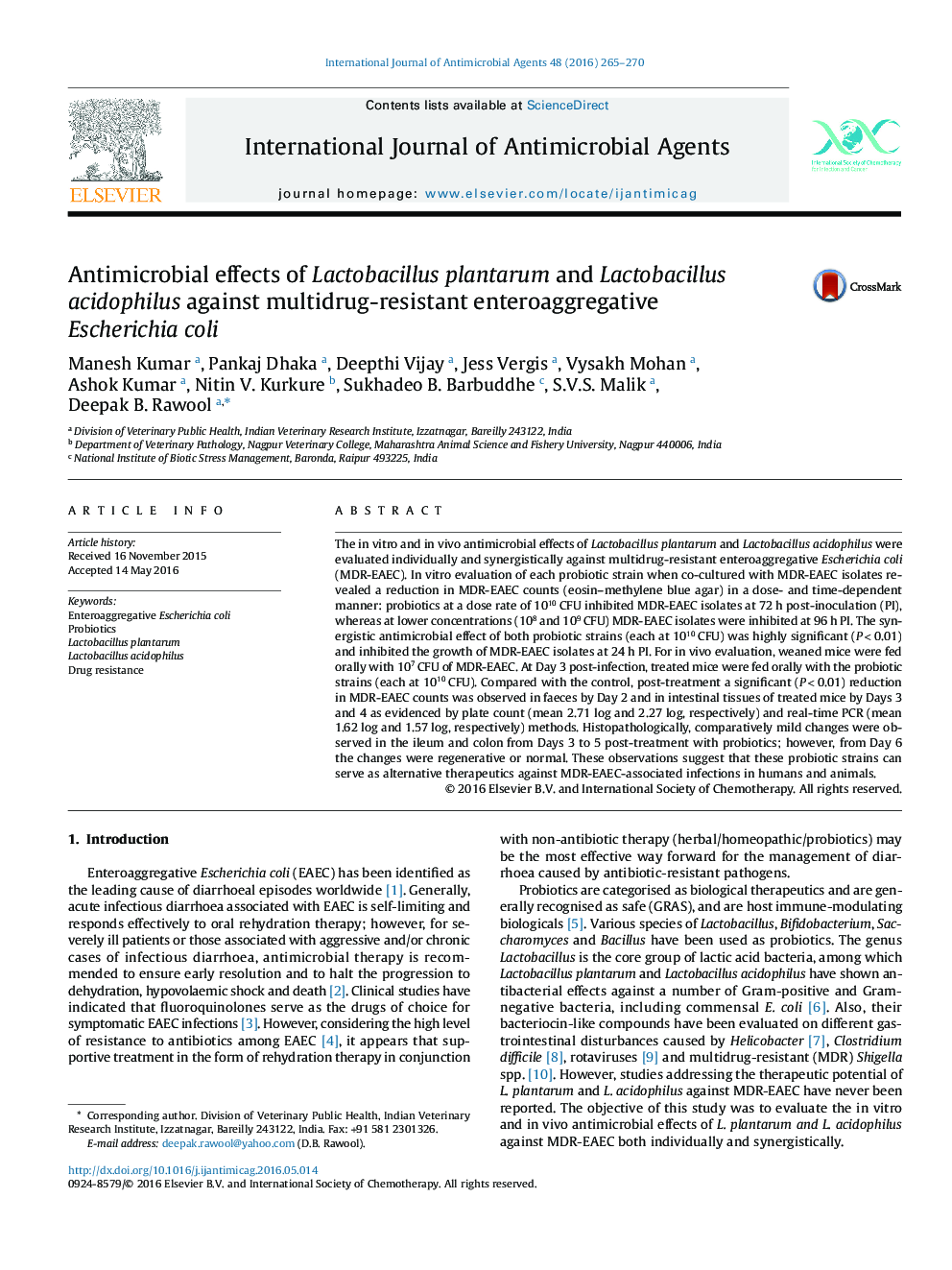| Article ID | Journal | Published Year | Pages | File Type |
|---|---|---|---|---|
| 3358397 | International Journal of Antimicrobial Agents | 2016 | 6 Pages |
•First study to evaluate antibacterial effect of probiotic strains against MDR-EAEC.•In vitro, probiotic strains in synergy were more effective against MDR-EAEC.•Probiotic-treated mice cleared MDR-EAEC on Day 5 post-treatment.•Histopathological changes were regenerative or normal in probiotic-treated mice.•Probiotics can serve as alternative therapeutics to curb MDR-EAEC infections.
The in vitro and in vivo antimicrobial effects of Lactobacillus plantarum and Lactobacillus acidophilus were evaluated individually and synergistically against multidrug-resistant enteroaggregative Escherichia coli (MDR-EAEC). In vitro evaluation of each probiotic strain when co-cultured with MDR-EAEC isolates revealed a reduction in MDR-EAEC counts (eosin–methylene blue agar) in a dose- and time-dependent manner: probiotics at a dose rate of 1010 CFU inhibited MDR-EAEC isolates at 72 h post-inoculation (PI), whereas at lower concentrations (108 and 109 CFU) MDR-EAEC isolates were inhibited at 96 h PI. The synergistic antimicrobial effect of both probiotic strains (each at 1010 CFU) was highly significant (P < 0.01) and inhibited the growth of MDR-EAEC isolates at 24 h PI. For in vivo evaluation, weaned mice were fed orally with 107 CFU of MDR-EAEC. At Day 3 post-infection, treated mice were fed orally with the probiotic strains (each at 1010 CFU). Compared with the control, post-treatment a significant (P < 0.01) reduction in MDR-EAEC counts was observed in faeces by Day 2 and in intestinal tissues of treated mice by Days 3 and 4 as evidenced by plate count (mean 2.71 log and 2.27 log, respectively) and real-time PCR (mean 1.62 log and 1.57 log, respectively) methods. Histopathologically, comparatively mild changes were observed in the ileum and colon from Days 3 to 5 post-treatment with probiotics; however, from Day 6 the changes were regenerative or normal. These observations suggest that these probiotic strains can serve as alternative therapeutics against MDR-EAEC-associated infections in humans and animals.
